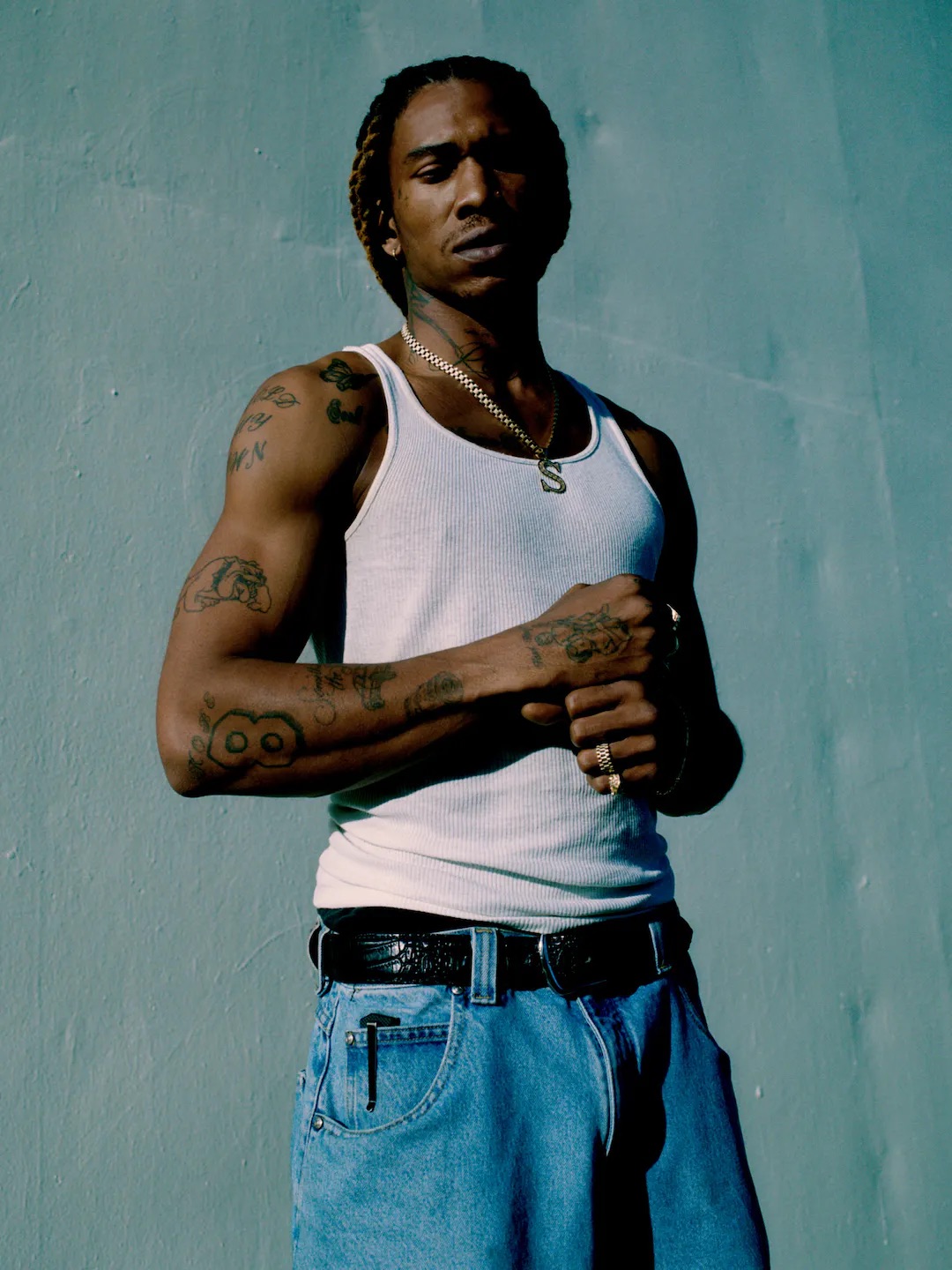Will Hagle is writing a screenplay about a guy who goes to the bank and takes out a $500K loan so that he can pay to have expensive features on his terrible rap album.
For a relatively small city, Long Beach is a familiar setting. Whether it’s Sublime, The Dove Shack, or Vince Staples singing about summertime, an eclectic slate of artists have depicted the LBC in hyper-specific detail. For Seafood Sam, his hometown’s unique blend of concrete grittiness and breezy seaside chill presented a blank canvas of infinite possibility. He could get into whatever he wanted. One of his brothers went the gangbanging route. The other was a nerd. Seafood Sam focused on music and creating something in between those two extremes.
The artistic legacy of Long Beach didn’t escape him. Tha Dogg Pound also came up around the Carmelitos, the north Long Beach housing project where Seafood Sam’s family lived. In the “Nuthin’ But A ‘G’ Thang” video, with the LBC logo proudly displayed on his shirt, Snoop put the city on the map. Sam’s favorite singer of all time is Nate Dogg, and he will convincingly argue against any alternative.
Despite that lineage, Seafood Sam worshiped Lil Bow Wow the most as a kid. He was always drawn toward upbeat, fun pop music with mass appeal (and besides, Snoop did put on Shad Moss). In the house, his brothers and sisters exposed him to a wide variety of genres from Ciara to Nelly Furtado. When describing his artistic ambitions now, he mentions Bruno Mars and Adele. He doesn’t just want to be a Long Beach rapper; he wants to be a superstar.
It’s a lofty goal for a laid-back, subdued vocalist whose stylistic analogues are closer to underground legends like Larry June and Curren$y than the aforementioned megastars. In fact, he wants to be “the mainstream Curren$y.” So far, his growth has been explosive. In 2018, Sam offhandedly learned how to make beats during some studio downtime. Shortly thereafter he chopped up a soul sample and rapped over what became “Ramsey.” Despite dropping it without a second thought, it’s currently at 11 million streams on Spotify and counting. The song’s unexpected virality continues today, and led to Sam’s deal with drink sum wtr.
His forthcoming debut album for the label, Standing on Giant Shoulders, is the latest step in Seafood Sam’s quest for music immortality. Whereas Sam’s earlier projects favor traditionally-crafted beats from soul and funk samples, Standing on Giant Shoulders consists entirely of live instrumentation.
In the studio, Sam helped Tom Kendall from the band Soular System craft sweeping, orchestral and all-original arrangements. Drummers, bassists, guitarists, and even harpists from the Soular System roster performed the parts, and Sam and Tom shaped them into their final form. Compared to Sam’s earlier work, the songs are lush and full. Sam tells me that the most important aspect of artistry to him, is “the process of making.” The meticulous craftwork that went into making Standing on Giant Shoulders is evident. Sam isn’t rapping over loops, his voice is one of many instruments in the world’s smoothest, coolest ensemble.
Sam’s vocals tend toward the monotone. He raps like he’s playing bass, gliding along in the lower register, locked into the groove. What his voice lacks in melodic range, he makes up for with his ear. Almost every track on Standing on Giant Shoulders, and much of Sam’s previous work, features a sung hook. While other rappers of his ilk are eschewing drums and hooks in favor of barring out to exhaustion over soul loops, he’s barring out between choruses over original live soul and funk, full drum set and all. He constructs songs in a more conventional verse-chorus-verse-chorus style, as if he wants his music to get stuck in people’s heads the way John Mayer did his in middle school.
Seafood Sam craves pop superstardom, and he believes if it were 1994 he would have already ascended to those heights. He still dresses and raps like the hip-hop that raised him never went out of style, because he knows that music and fashion come in cycles. He calls himself a “futuristic artifact,” meaning he’s ahead of the curve for 90s trends to come back. If they don’t, he’ll maintain, and the world will catch back up to him, or not. As he puts it, Seafood Sam is like Ma$e or Curren$y or Nate Dogg: “Just cool.” Being cool never goes out of style.

